From the Valley of the Sun comes a hot copter kit
RotorWay Aircraft is out of business, closed up for good. However, the Rotorway helicopter kit it manufactured, the Exec, lives on—but not in its original state. Confused? I’ll explain.
In 1990, several banks were foreclosing on RotorWay Aircraft. At that time, John Netherwood, an English businessman who had previously built an Exec, sensed an opportunity. From his Exec-building experience he knew the product well; and with many enhancements in mind, he purchased the failed company’s assets.
Netherwdod reopened the company as RotorWay International, rehired 12 key employees, and introduced many improvements to the Exec model, called the Exec 90, included upgrades such as dual electronic ignition, taller stress-absorbing landing gear, an improved bonding and riveting pattern on the main rotor blades, wider cabin, and dual tachometers, to name a few.
Then, at a cost of $1.5 million, Netherwood built a brand new 37,000-square-foot facility at the Stellar Air Park in Chandler, Arizona, just outside Phoenix. But he didn’t stop there. He went back to the drawing board and added a Fadec (Fully Automated Digital Engine Control) to the Exec 90’s powerplant (see “Gaining Authority,” story below).
Netherwood then added more cabin space, redesigned the seats for better comfort, and increased the size of the door openings. Also, a new horizontal fin was added to give the helicopter additional in-flight stability. This newest model Rotorway helicopter is called the Exec 162F, and I was in town to take it for a test flight.
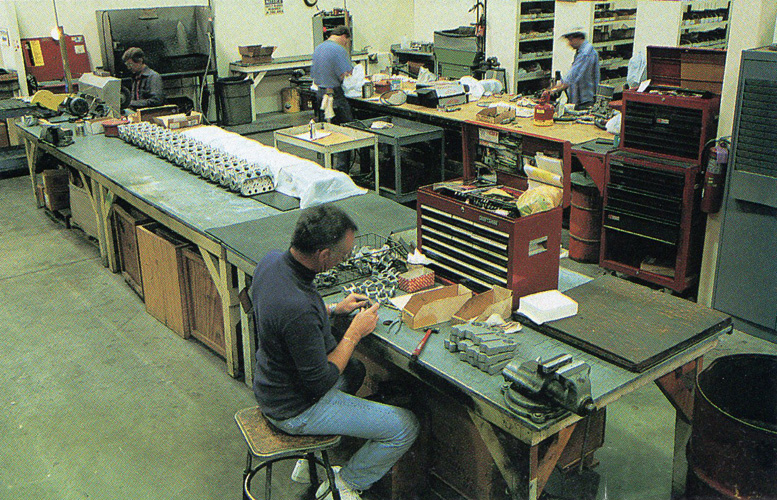
After I arrived at RotorWay International’s new factory, I was introduced to Elbert Wolter, RotorWay’s director of flight operations and an FAA designated examiner. In a friendly Texas drawl, he said, “Don’t worry about my name; just call me Stretch.” We spent some time going over the helicopter’s flight manual and then walked outside to do some flying.
We began a standard preflight, carefully checking the main rotor and tail rotor blades. Unique to the 162F is a movable ballast weight. To carry a passenger, the 162F uses a 25-pound cylindrical weight that slides on a rod where the tail boom connects to the fuselage . For solo flight, the weight must be repositioned to the toe of the right skid.
A spring-loaded locking pin keeps the weight in place. This is another major improvement, because the original Exec required relocating the battery to carry a passenger. Since the 162F has a small center of gravity range, it’s very important to have the weight in the appropriate location.
Case in point: In December 1993, an instructor, without repositioning the ballast, boarded the helicopter after supervising his student doing solo hovering maneuvers. As the helicopter lifted off with both occupants, the center of gravity was so far forward that the nose pitched down, the main rotor blades struck the ground, and the helicopter rolled over.
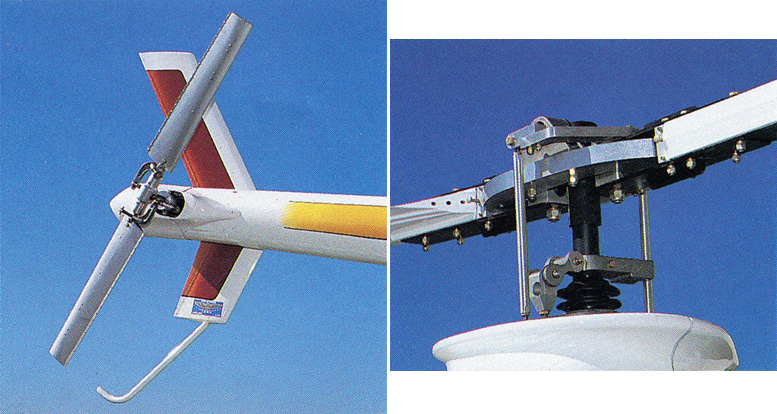
Contrasting the 162F’s sophisticated engine control system is a simple drivetrain of belts and chains.
So after double-checking the ballast weight—I climbed into the cockpit. The flight controls were within easy reach. (The nice thing about building a kit is that you can adjust the controls’ height and length for a custom fit.) After performing the standard checks and arming the engine’s Fadec system, I hit the starter switch and the liquid-cooled, 150-horsepower engine sprang to life.
While the helicopter was warming up, Wolter explained that when lifting off into a hover, I would notice that the 162F is more stable than most light helicopters. I must admit that from having flown man y type s of helicopters, and because of the 162F’s size and weight, I was skeptical.
However, as I raised the helicopter off the ground, it hovered as promised. Wolter and I spent an hour hovering around the Stellar Air Park. I did hovering turns, sideways flight, and pick-ups and set-downs. The 162F was predictable and easy to handle.
An interesting exercise was shutting off the primary Fadec system in a hover. Instrument panel warning lights immediately illuminated, and the Rotorway helicopter engine automatically switched over to a completely independent secondary system without power interruption.
If this happens, RotorWay International recommends landing as soon as practical. By then our fuel was getting low, so we headed back in for a break. My next flight was with John O’Neil, a company instructor pilot.
With O’Neil, me, and full fuel (17 gallons), the helicopter was at its maximum gross weight of 1,500 pounds. In a hove I noticed a power setting of 26 inches of manifold pressure. That same power setting while taking off at 65 mph resulted in a 750-feet-per-minute climb rate.
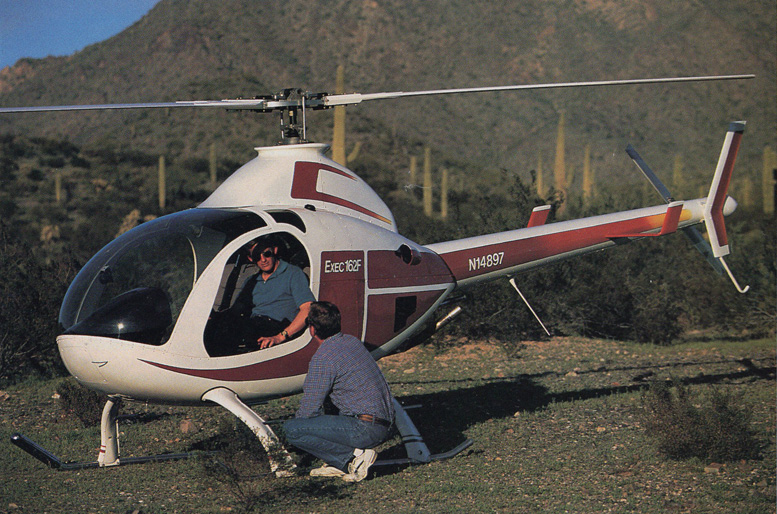
On our way to a closed airport to try a few autorotations, I performed some steep turns and high-speed flight to get a feel for vibration levels. Indeed, at the 162F’s published maximum speed of 115 miles per hour, it felt as smooth as a production helicopter.
Arriving at the practice site, I performed a couple of normal and steep approaches to get a good control feel before going on to autorotations. Turning from base to final, O’Neil rolled off the throttle and I lowered the collective control to enter autorotation.
I slowed to the recommended airspeed of 65 mph and we stabilized at a descent rate of 1,600 fpm. No surprises as we glided towards the landing area. At the recommended 35 feet, I started a flare to reduce airspeed and descent rate.
I began bringing the power back in and stopped the helicopter in a hover five feet over the runway. I did some more autos and found the 162F to be stable and consistent. Anyone proficient at autorotation in the Robinson R22 will have no problems with this helicopter.
Since the engine has less cubic-inch displacement than the 150-hp Lycoming engine on the Robinson (162 vs 320 cubic inches), and consequently less torque, I thought the 162F might have a problem maintaining rotor rpm under a high power demand. So, on the way back to the factory I brought the helicopter to an out-of-ground-effect hover at 1,000 feet.
The engine and rotor rpm held steady at the top end of the green arc. The Rotorway helicopter 162F uses an asymmetrical main rotor blade that is more efficient than a symmetrical airfoil. This type of blade is subject to higher stresses and twisting forces. Therefore, it is normally not used in helicopter blade design
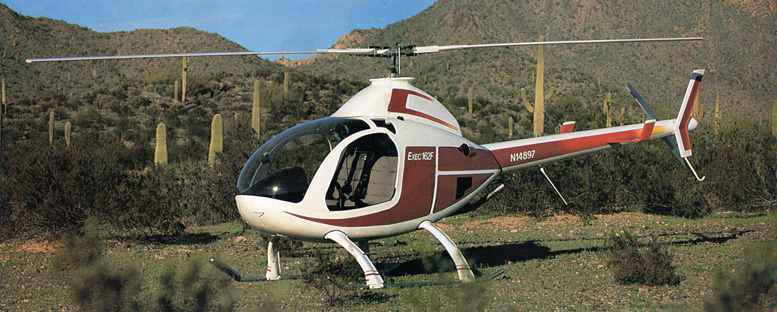
The Rotorway Exec 162F’s elegant look belies its fast build time and simple systems.
Annunciators alert the pilot to a failure of the Fadec engine control system. Kit components are assembled in Rotorway’s new factory in Chandler, Arizona.
RotorWay had an independent laboratory run fatigue tests in order to determine the expected life of the blades, which are made of aluminum skin bonded and riveted to an aluminum spar. The report showed the blades would last 4,000 hours. Thus, to be conservative, RotorWay lists the replacement time at 1,000 hours.
The engine transmits power to the rotor system through a chain drive instead of the traditional gearbox. The sprockets and chain operate in an oil bath and provide a reduction in revolutions per minute. RotorWay feels that for the average builder this system is advantageous, in that it is simple to monitor and maintain.
According to Netherwood, the system has proved reliable. The chain’s life is limited to 100 hours. The system also provides a pulley that, through a series of three belts, drives the tail rotor. An adjustment at the rear of the tail boom controls the tension on all three belts.
In 1992 there was a tail rotor belt failure because an incorrect adjustment caused a loose belt to roll over in the pulley sleeve.
RotorWay then constructed a test platform to check continually for belt wear and longevity. As a result, the original belts were replaced with aramid fiber cord belts with twice the strength and minimal stretch.
The company claims the new belts will survive a rollover long enough to last between refuelings. The 162F’s cyclic control uses a dual cable system. This design eliminates any slack, allowing instant control inputs to the rotor system.
The cables are easy for the builder to route through the airframe and provide redundancy for safety. The collective control works mechanically through a series of push rods and bellcranks.
The company has made a commitment to constantly improve the safety and performance of its helicopter.
Considering the lack of control the company has over the building process and the experience level of many of the pilots, this is not an easy task. To get a better understanding of the safety record, I ordered the National Transportation Safety Board’s accident reports for the last 10 years.
Not surprisingly, out of the 47 total Rotorway helicopter accidents reported (this includes the Exec model manufactured by the previous owner), the majority — 68 percent – were blamed on pilot error. An interesting fact is that 35 percent of these were committed by pilots who were illegally piloting the helicopter without a rating or a sign-off.
The remaining 32 percent were attributed to some type of mechanical or engine failure. Her e is where it gets sticky. From the reports it is difficult to tell whether the mechanical problem cam e from the factory or the builder.
The only accident that lists the manufacturer as the culprit involved an engine failure in February 1993. A factory-owned research-and-development helicopter had a valve-stem fatigue failure from improper grinding by an outside vendor.
The pilot performed an autorotation (no injuries) and RotorWay immediately instituted stricter quality control. This accident is one of only eight involving helicopters built by the “new” RotorWay International Company. The remaining seven were all attributed to pilot error, and the majority of them were training related.
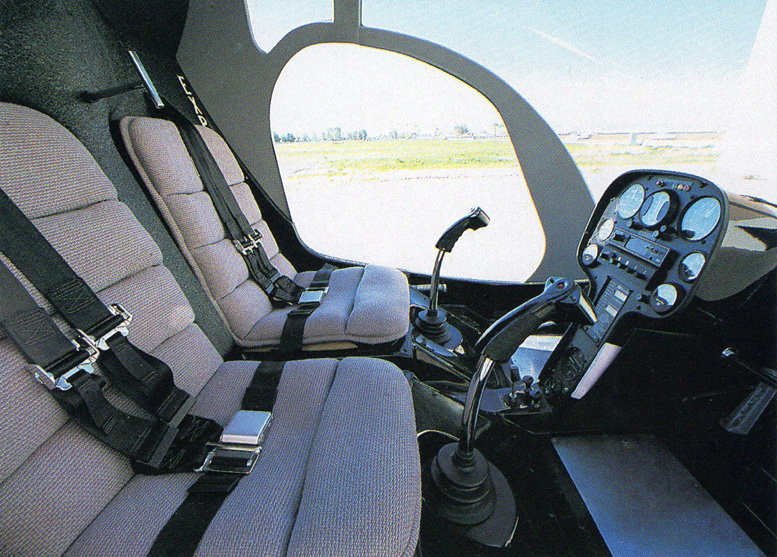
The trend shows that the improvements Netherwood is making are paying off in terms of mechanical reliability. RotorWay lists the kit price as $59,850, not including paint, avionics, and freight. When all is said and done, the price tag will easily go well over $60,000.
This is about the same price that the Aircraft Bluebook-Price Digest lists for a clean, mid-time Robinson R22 Alpha. But, unlike the situation with the certified aircraft, the builder can do all inspections and repairs on the 162F. There is tremendous pride in building your own helicopter.
Because the Rotorway helicopter is an experimental aircraft, the builder has the authority to modify and customize the helicopter. This is evident as you walk the halls of RotorWay, because every wall has picture after picture of proud owners and their machines. I heard that one builder was looking into adding retractable landing gear.
RotorWay International has streamlined the building process by incorporating many prefabricated components and doing all the welding on the kits. It has put together a comprehensive construction manual with sharp photographs and clear, easy-to-read text. The company claims the 162F’s average build time of 300 hours is one of the lowest in the kit industry.
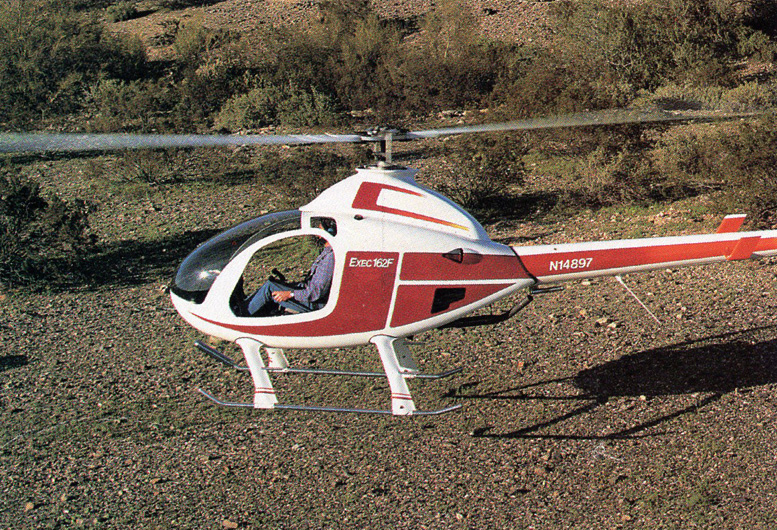
The new facility houses a training department for teaching builders to fly and maintain their helicopters. The three-part course costs $3,500. Netherwood knows that most builders are newcomers to aviation, so getting aircraft-specific training is the key to having an excellent safety record.
He has devoted considerable effort to developing a comprehensive orientation program for the 162F, and he even asks builders who are experienced helicopter pilots to attend. RotorWay International’s latest move to make its helicopters more affordable is offering financing for up to 90 percent of the purchase price and terms as long as 20 years.
So now your Rotorway helicopter can not only sit in the garage with the car, but it can have a monthly payment as well.
Tim McAdams, AOPA 925518, a helicopter CFI who accumulated more than 5,000 hours, of which 4,700 are in helicopters.
GAINING AUTHORITY
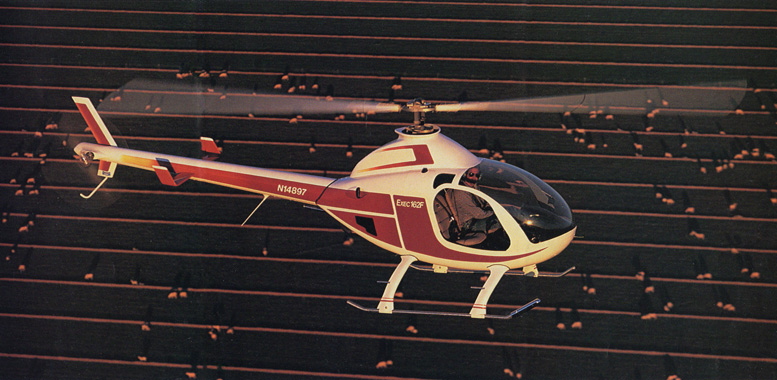
Jumping the chasm to the modern aircraft engine
Rotorway International is unique among kit manufacturers in that it doesn’t use an off-the-shelf powerplant. Back in the company’s early days, founder B.J. Schramm decided that none of the existing engines would be ideal for his new helicopter. After perusing several designs, he settled on the long-running Volkswagen flat four.
From that seed he began modifying the engine for aircraft use, eventually replacing most major components. Today, only the basic architecture of the venerable VW engine remains.
Unlike the VW, the Rotorway helicopter engine is liquid cooled and carries a forged crankshaft within its cast-aluminum cases. More important than the 162-cubic-inch engine’s mechanical evolution are the recent electronic advances.
Rotorway calls its system a fully automated digital engine control system (Fadec) — not to be confused with the turbine world’s full authority digital engine controls. For the new Exec 162F, the engine gains a new induction system with long tuned intake runners for good low-end power—it replaces the Exec 90’s two-throat Weber carburetor and coolant-heated plenum chamber.
As before, the 150-horsepower engine uses a dual spark plug ignition setup on the lost-spark scheme; that is, each spark plug fires once each piston stroke. For one of those strokes, only exhaust gases remain in the combustion chamber, so no explosion occurs. This arrangement allows the Rotorway helicopter to use half as many ignition coils and a far simpler set of electronics.
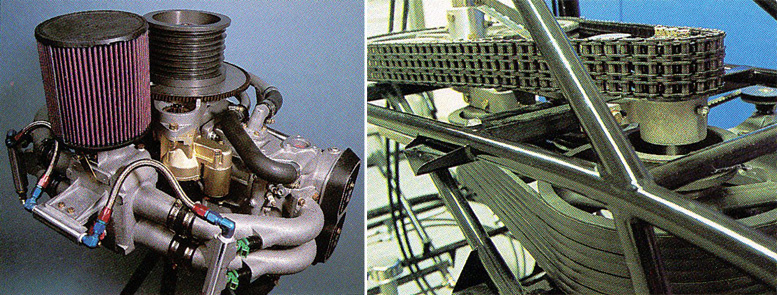
For brains, a computer the size of a dictionary controls the timing of the four main solenoid fuel injectors and manages the electronic ignition system. Rotorway uses what’s called an open-loop arrangement, in that there are no direct measurements of engine performance fed back to the computer.
Instead, the processor samples a number of parameters — coolant and outside-air temperature; manifold; barometric; and fuel pressure; crankshaft and throttle position; and electrical system voltage.
It compares these readings to a performance map burned into a nonvolatile memory. For every combination of variables, the computer determines the ideal amount of fuel to be injected, as well as the spark timing.
While such a system is revolutionary in aircraft, it’s commonplace in modem automobiles and has proven to be extremely reliable. And yet Rotorway has saved for the rainy day. The main system is supposed to work with a number of the sensors inoperative and down to 10 volts.
If the voltage drops to 10 — or some other anomaly pops up—annunciators in the cockpit warn the pilot. If, for example, bus power drops below 9 volts, the main computer will shut down to preserve its circuitry. It can also be taken out of the loop manually. So there’s a backup. In a separate module is a smaller, less-sophisticated computer.
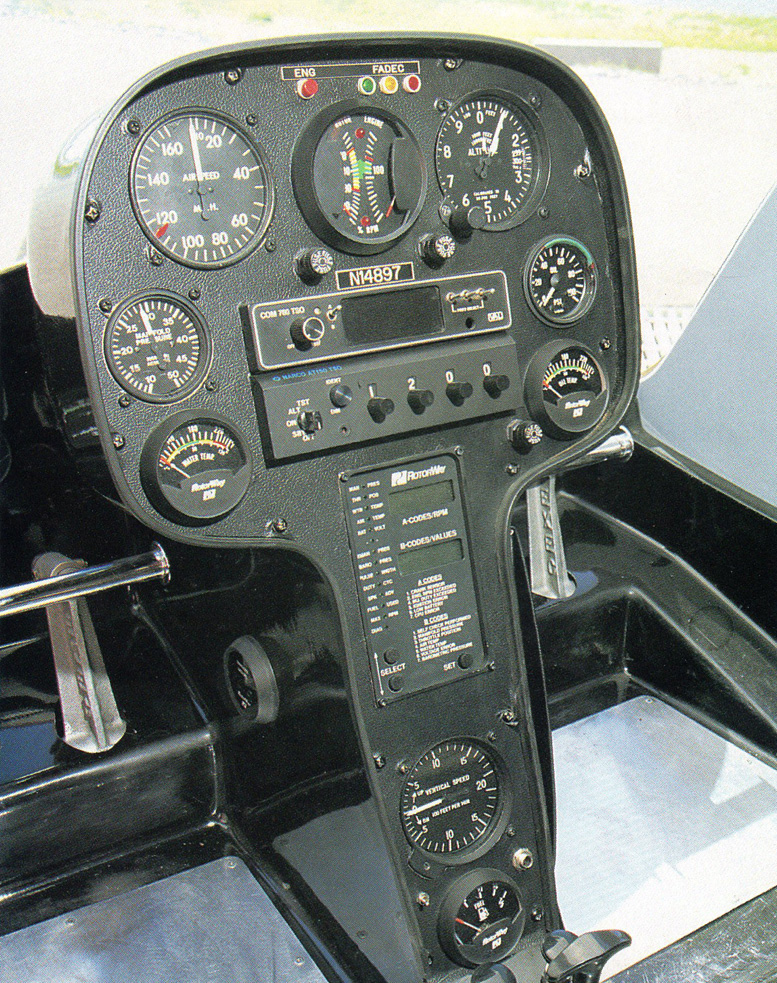
It monitors engine rpm and throttle position—through a separate throttle-position sensor piggybacked to the main computer’s — and makes an educated guess at the fuel and spark requirements. Rotorway has designed the system to operate between sea level and 3,000 feet; above that, the mixture will become too rich for full power.
To deliver fuel, the backup computer fires a pair of injectors located below the throttle body in the intake plenum; it doesn’t rely upon the main injectors located just upstream of the intake ports. In addition, the spark timing on the auxiliary system is fixed, rather than variable as it is on the main computer.
The engine will continue to run quite well on the backup system, albeit within a narrower range of atmospheric conditions. In the event of a main system shutdown due to low voltage, though, it behooves the pilot to ascertain the cause quickly. Should the system drop to 8 volts or less, ignition ceases and the little four-banger will go silent.
Fortunately, the Rotorway helicopter gives the pilot plenty of warnings – bright red lights on the panel — before the autorotation fun begins. If Rotorway’s Fadec proves to be as reliable as the integrated automotive engine computers, a duff alternator will probably be the only cause of a computer shutdown.
Marc E. Cook
Rotorway Exec 162F Kit Helicopter
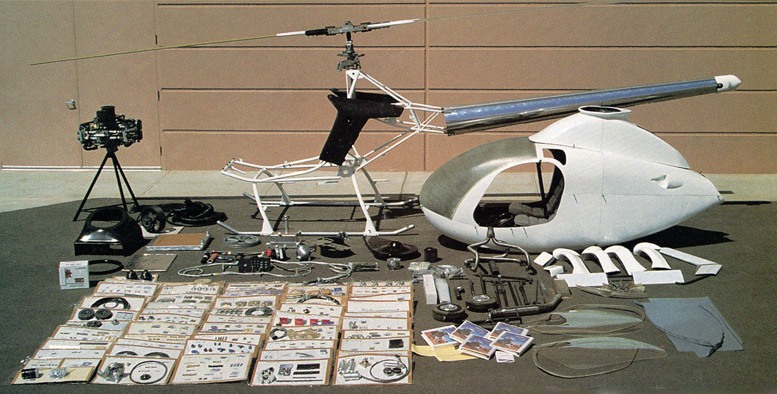
| RotorWay International Exec 162F Specifications | |
|---|---|
| Powerplant | RI162F |
| Horsepower | 150hp |
| Recommended TBO | 1,000hrs |
| Main rotor diameter | 25ft |
| Tail rotor diameter | 4ft |
| Recommended rotor blade TBO | 1,000hrs |
| Length | 22ft |
| Height | 8ft |
| Skid width | 5ft 3inches |
| Seats | 2 |
| Empty weight | 975lbs |
| Gross weight | 1,500lbs |
| Useful load | 525lbs |
| Fuel capacity, std | 17Gal/102lbs |
Rotorway Helicopter Performance |
|
| Service ceiling | 10,000ft |
| Hover in ground effect | 7,000ft |
| Hover out of ground effect | 5,000ft |
Limiting and Recommended Airspeeds |
|
| Normal cruise speed | 95mph |
| Rate of Climb | 1,000fpm |
| Fuel burn | 8.5 gal/hr |
| Maximum airspeed | 115 mph |
| Range | 180 miles |
| Endurance | 2 hours |
| Kit price: $59,850 (1995 price) | |
Reprinted from the August 1995 issue of AOPA Pilot – Copyright © 1995 AIRCRAFT OWNERS & PILOTS ASSOCIATION.
Read more about Rotorway’s early days here.
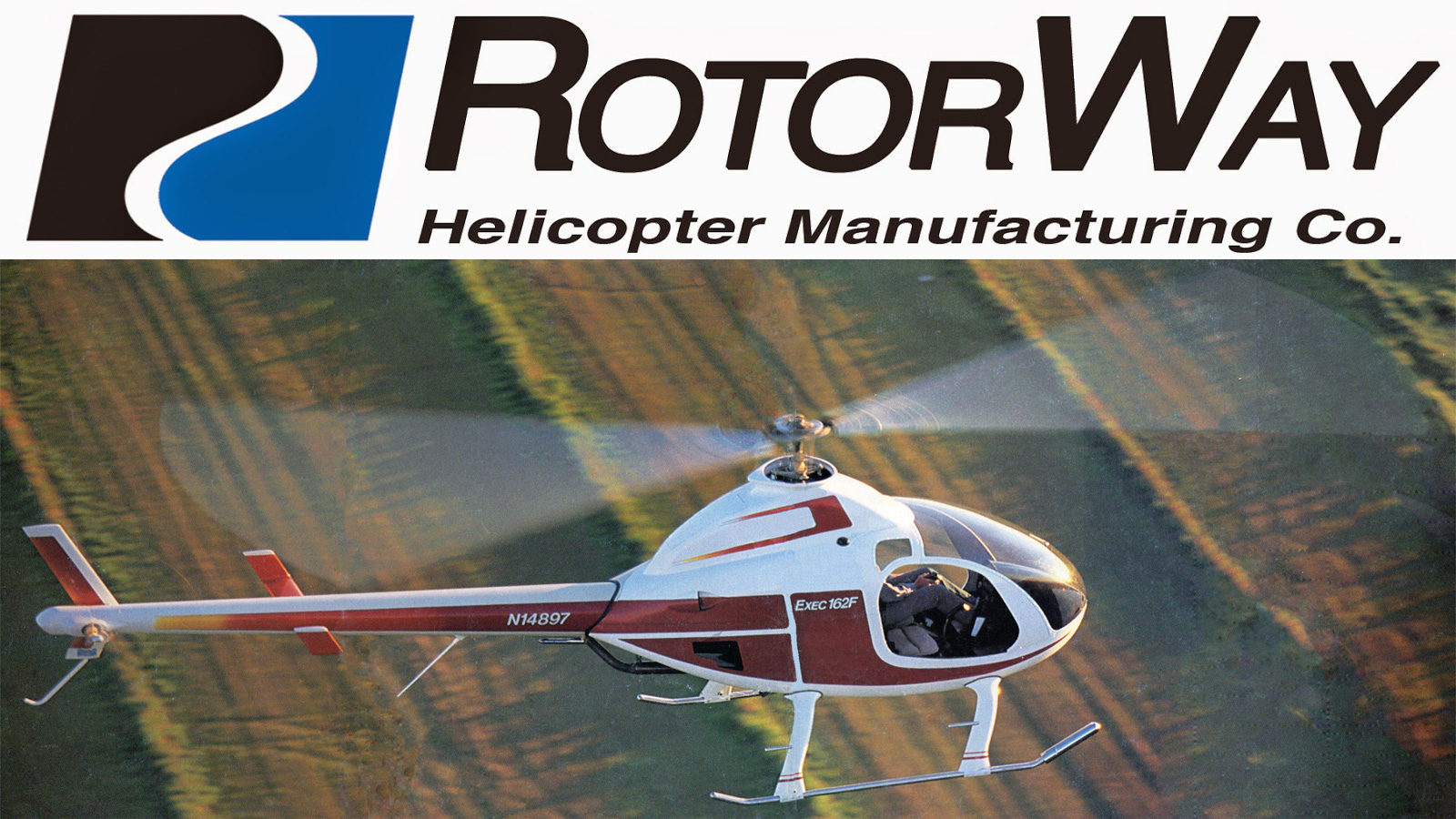

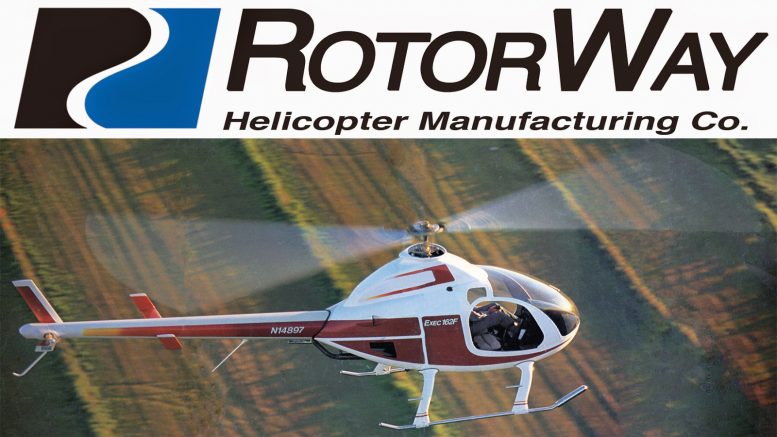
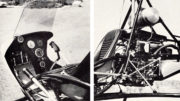
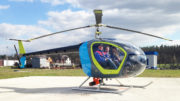
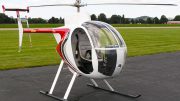
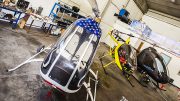
I would like to build a Rotorway helicopter but there are going to be some time where I might need help building a Rotorway helicopter and make it safe flying.
There are plenty of support groups to help with building including Rotorway themselves.
I love helicopters and I would love to build one but there in the expensive side for me. I wouldn’t past the chance of owning one.
Unfortunately, any helicopter is going to be costly. The AW95 is a great DIY helicopter and the Mosquito is a good kit choice.